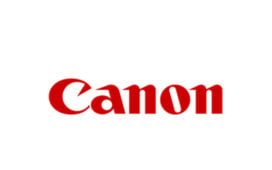Nobody likes a pragmatist. I say this as one. Passionately set forth your plans to change the world and a pragmatist will drag you crashing back to reality faster than Shiba Inu Coin after an Elon Musk tweet. That’s why we don’t get invited to parties. At least, this is what I tell myself.
As a pragmatist, or perhaps because I’m a pragmatist, I’ve routinely rejected the rhetoric that e-commerce in the Middle East is on this hyper-growth trajectory, and I’ve dismissed the meteoric five-year growth projections as the hyperbole of optimists. At least, I had until now.
2022 looks set to be an inflection point for e-commerce in the region. Penetration is now approaching double digits in certain categories, and while we’ve still got some way to go before the optimists can cry ‘we told you so’, brands and retailers who’ve got their e-commerce strategies right are finally starting to see rewards.
However, as these long-promised e-commerce sales start to materialise, e-tailers are facing up to an uncomfortable truth: they’re often not very profitable.
In the rush to grow e-commerce, retailers have wrestled with technology, culture, organisational structure and new business processes – often at great capital expense. The scramble to respond to changing consumer behaviours has resulted in time-to-market winning out over operational efficiency, conversion rates taking precedence over margins and sales taking priority over profitability.
As e-commerce matures, brands and retailers must think beyond simply generating growth; they must pragmatically plot their path to profitability. Iterating on loss-making models isn’t sustainable longer-term: Wadi, Awok, The Modest and, to an extent, JollyChic have learnt this the hard way.
While some retailers have succumbed to the struggle of sustainable growth, plenty have succeeded in turning e-commerce from cost centre to profit centre. Here’s just a few of the things they’ve got right:
A clear value proposition. Relying on a constant cycle of promotions and discounts to win customers is equivalent to renting a Ferrari to impress on a first date. If you’re hoping for a second date, you’re going to have to bring your personality along or hope the restaurant lighting helps you out, otherwise you’re resigned to renting a Ferrari again. Anchoring your digital proposition to price comes at a cost. Don’t become dependent on discounts. Retailers like Ounass have pulled away from promotional incentives and instead create value and win customers through experience, convenience and choice.
Acquisition vs retention. Every (good) marketer knows their customer acquisition cost (CAC), but what about customer retention cost (CRC) or customer lifetime value (LTV)? As more brands chase the same groups of buyers, customer acquisition costs will continue to rise. Many brands don’t realise a profit on single-purchase customers. Increasing the recency, the frequency and the value of customer spend should help.
Sweat your assets (and your inventory). For most retailers, the largest operating asset is inventory. Yet inventory visibility and integrity are often the root causes of the worst crimes against efficiency. Cancelled orders due to stock shortages, out-of-stocks on the website when stockrooms are full, and stock sat aging in e-fulfilment centres when store shelves sit empty can have a profound impact on profits. Connected inventory makes all your stock available to the consumer, enabling brands with physical stores to consider store inventory to fulfil online orders.
Get ahead of returns. With each return you burn the costs of acquiring the sale, of processing the order, the packaging, the delivery, the cost of collecting the return, plus there’s the less tangible cost of having inventory off-shelf. In Europe, average return rates run as high as 40 per cent and e-tailers who once proudly shouted ‘free returns’ are increasingly introducing charges. Before we get to this point, simple tactics such as encouraging consumers to return merchandise to stores can cut processing time by up to 10 days, improving the chances an item can be resold at full price. Ultimately, preventing returns in the first place with a predict, prevent, detect and respond framework will make the biggest impact on margins.
Manage marketplaces. For many brands, Amazon and Noon are their largest sources of e-commerce revenue. Properly evaluating how you sell through marketplaces (third-party vs first-party), tightening trade terms and establishing a clear assortment, pricing and inventory strategy are critical.
In the Middle East, e-commerce is beginning to live up to its promise. The optimists, whose hyperbolic projections supercharged the e-commerce gold-rush, are now packing up their wagons and rolling out towards new territory, web 3.0, their magic calculators already busy creating growth projections for the metaverse. Before the inevitable stampede to this new frontier ensues, let’s not abandon the mine. In the years ahead, e-commerce will be cardinal to the P&Ls of brands and retailers. We must continue to scale while prioritising profit and maintaining a relentless focus on operational efficiency.










